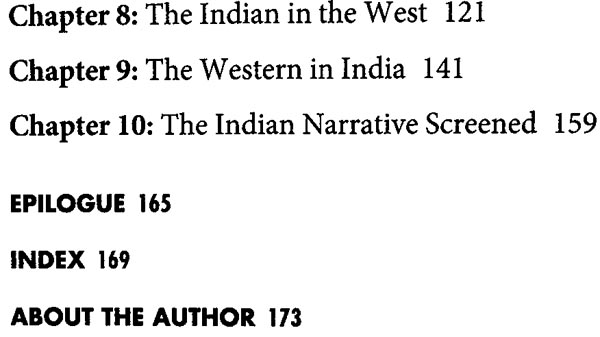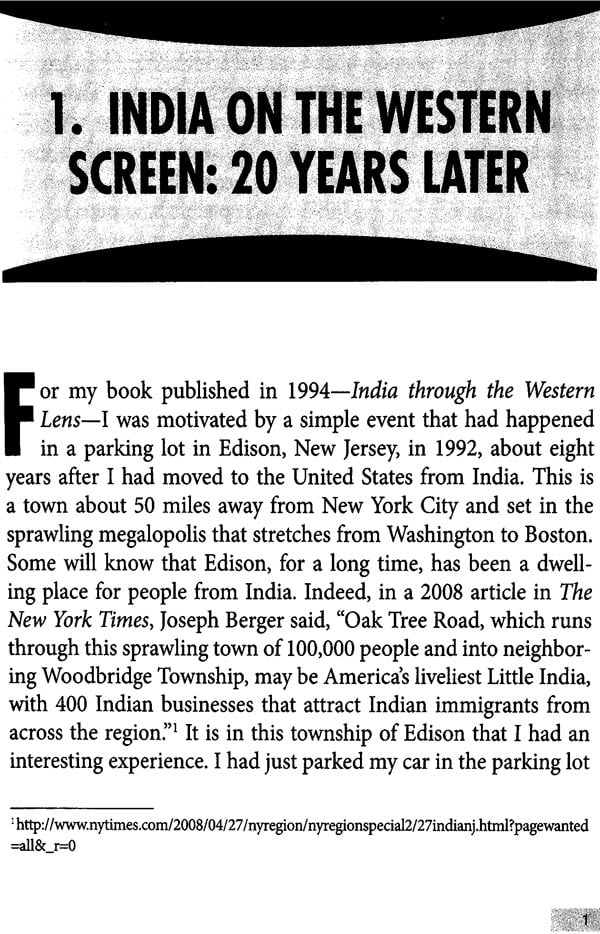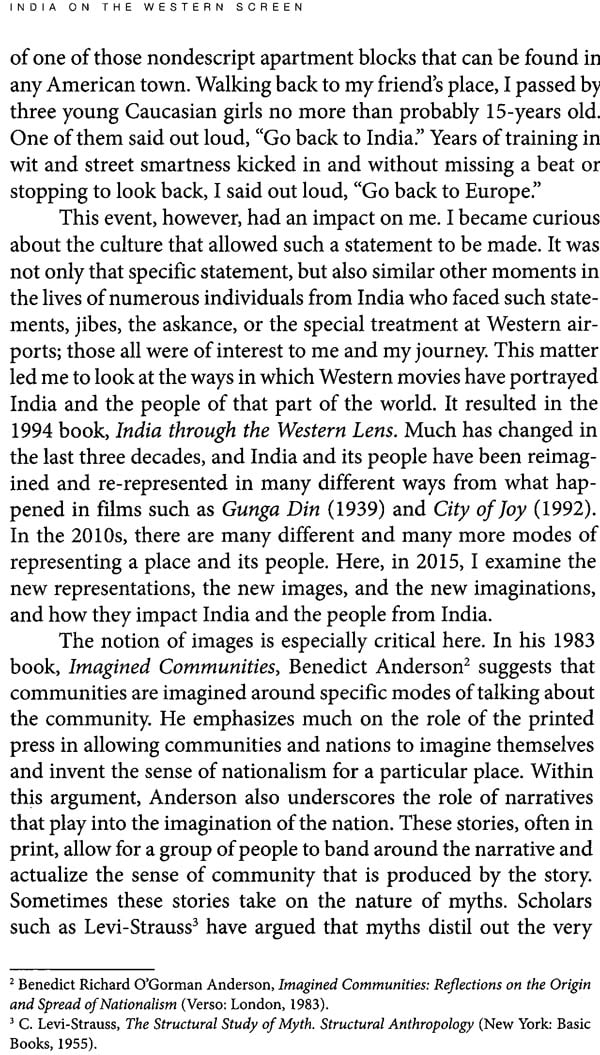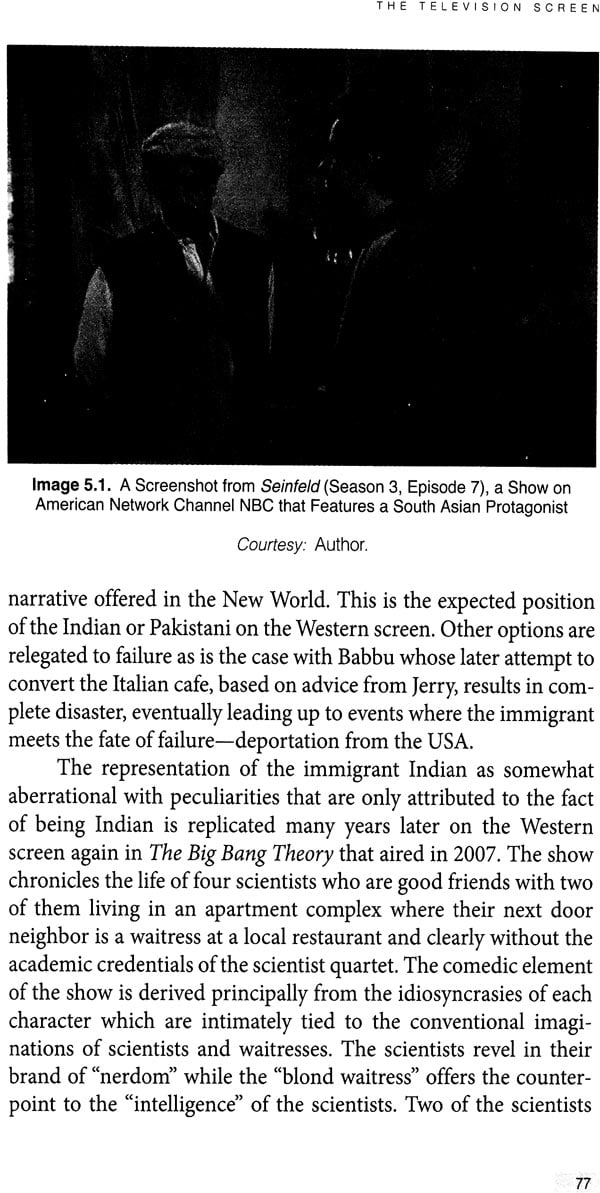
India on the Western Screen: Imaging a Country in Film, TV and Digital India
Book Specification
| Item Code: | NAQ534 |
| Author: | Ananda Mitra |
| Publisher: | Sage Publications India Pvt. Ltd. |
| Language: | English |
| Edition: | 2016 |
| ISBN: | 9789351509776 |
| Pages: | 192 |
| Cover: | HARDCOVER |
| Other Details | 9.00 X 6.00 inch |
| Weight | 300 gm |
Book Description
Building on his earlier book India through the Western Lens: Creating National Images in Film (SAGE 1999), which focused primarily on films, Mitra expands his latest study to new media. Effectively, the book highlights the West's perception of India based on what is being projected through visual media.
He has consulted with many different industries and is the inventor of the concept of "narbs" that allows for a careful and systematic narrative analysis of the unstructured component of big data that has become available with the growth of social media. He is considered a specialist in analyzing the way in which narratives produce images of people and places, with a special emphasis on representation of Indians across the globe.
Since screens do not operate in the absence of audiences, this book also elaborates on the different kinds of audiences that are exposed to the screens. Given that the book deals particularly with India, the audiences considered here are the ones that are relevant to India in the West. Thus, a good part of the book examines the kinds of audience, especially of Indian origin, who are found in the West and who have to interact with the larger audiences that witness India on the different screens of the West.
Finally, all these screens and audiences make up a system which we are all a part of. Consequently, what happens on the Western screen about India impacts us all, especially if one is an Indian? The book closes with the implications of the images on the screen and offers a theoretical explanation as to why Indians are treated in certain ways by the people of the West. The way India is represented on the Western screen is not merely a matter of curiosity. Instead, this book offers a sense of what to expect out of the representations when two individuals interact with each other within the social sphere created by the images. In other words, what has movies such as Slumdog Millionaire done to how India is perceived globally, or what does the appearance of Priyanka Chopra in the popular American crime thriller Quantico does to Americans thinking of Indians in America?
Book's Contents and Sample Pages













